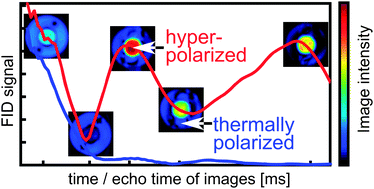Proton magnetic resonance imaging with para-hydrogen induced polarization†
Abstract
A major challenge in imaging is the detection of small amounts of molecules of interest. In the case of magnetic resonance imaging (MRI) their signals are typically concealed by the large background signal of e.g. the body. This problem can be tackled by hyperpolarization which increases the NMR signals up to several orders of magnitude. However, this strategy is limited for 1H, the most widely used


 Please wait while we load your content...
Please wait while we load your content...